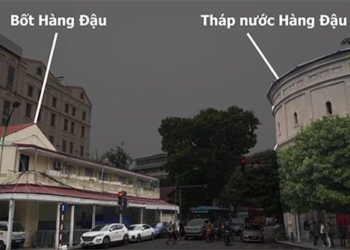For the past 80 years, air forces around the world have utilized five generations of jet fighters. A common feature of all five generations is the jet engine, a revolutionary invention that led the United States to cease producing any propeller-driven fighters after its introduction.
The jet engine has significantly enhanced the capabilities of fighter aircraft. It allows them to break the sound barrier, carry a large payload of bombs that were previously only carried by larger bombers, and fly close to the edge of space. This article will review the five generations of jet fighters used to date, along with the upcoming sixth generation fighter.
First Generation (1942): Comet and Shooting Star
In 1941, the first Allied jet aircraft, the British Gloster E.28/39, was secretly demonstrated to U.S. Air Force and Army officials. Subsequently, these officials requested the American industry to produce their own jet fighters. As part of this urgent project, Bell Aircraft developed the P-59 Airacomet (Comet), the first jet aircraft in the United States. The development of the Airacomet was kept secret; Bell even covered the aircraft’s body with tarps to conceal its large air intakes, a feature unique to jets, while adding a dummy propeller at the front for camouflage. This aircraft made its first flight in October 1942 but was never used in combat.
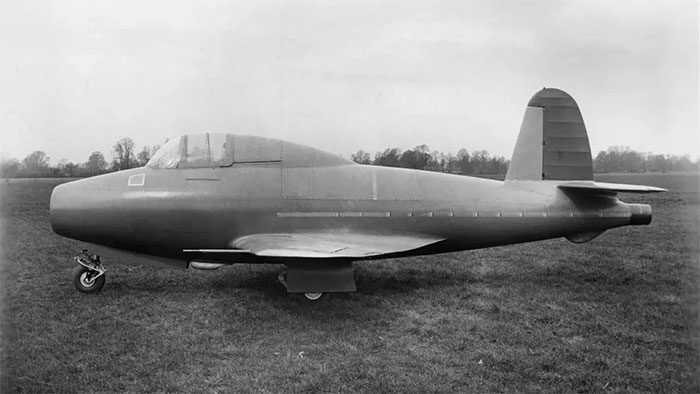
Prototype of the Gloster E.28/29 in April 1941. (Photo: Baesystems).
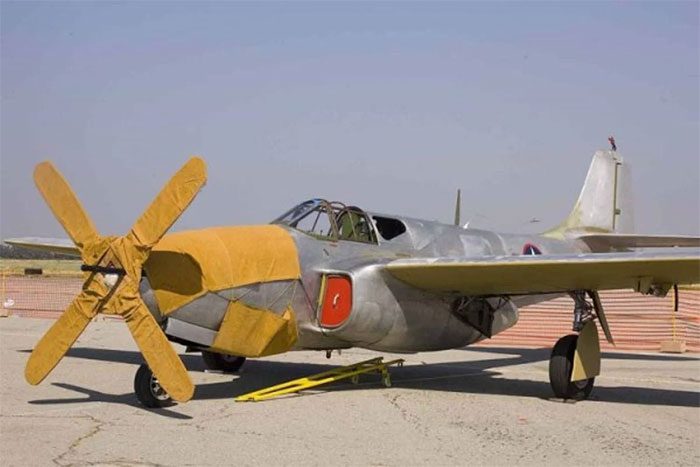
To maintain secrecy, the P-59 Airacomet was camouflaged with a wooden propeller. (Photo: Aviation History).
Shortly after the Airacomet, the Lockheed P-80 Shooting Star was introduced. The P-80 was developed quickly, with its development starting in 1943 and its first flight occurring in 1944. The Shooting Star was the first aircraft to exceed 500 mph (804 km/h) in level flight, eventually reaching speeds of up to 580 mph (933 km/h). It was designed as an interceptor, utilizing jet engines to fly higher than propeller-driven aircraft and then attack them from above. The P-80 only flew a few reconnaissance missions in Europe before World War II ended, but it was widely used in the Korean War. The P-80 was equipped with guns, specifically six .50 caliber BMG (0.5 inch) machine guns mounted in the nose.
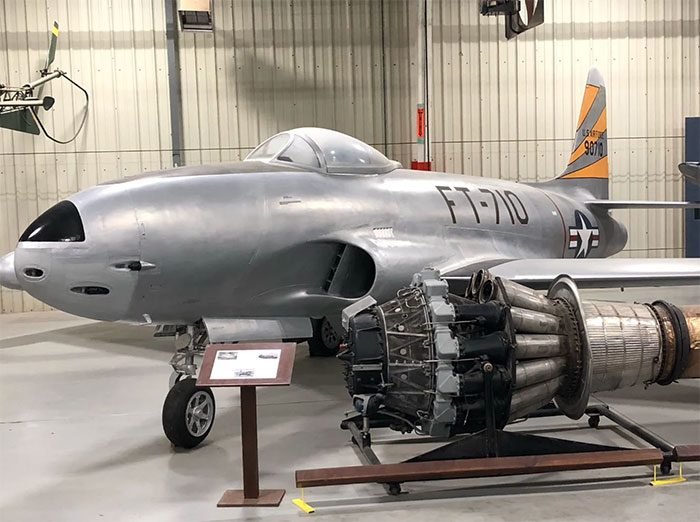
Lockheed P-80 Shooting Star next to its engine. (Photo: Facebook).
Second Generation (1958): The Era of Jet Engines and Missiles
The North American F-86 Sabre was not the first jet fighter produced by the United States, but it was the first to be equipped with air-to-air missiles. This combination remains potent even today. The F-86 Sabre achieved great success, with nearly 10,000 aircraft produced and utilized by 30 countries worldwide, including both the U.S. Air Force and Navy. The F-86 is regarded as a second-generation fighter, emerging just a few years after wartime jets like the Me262 and Meteor.
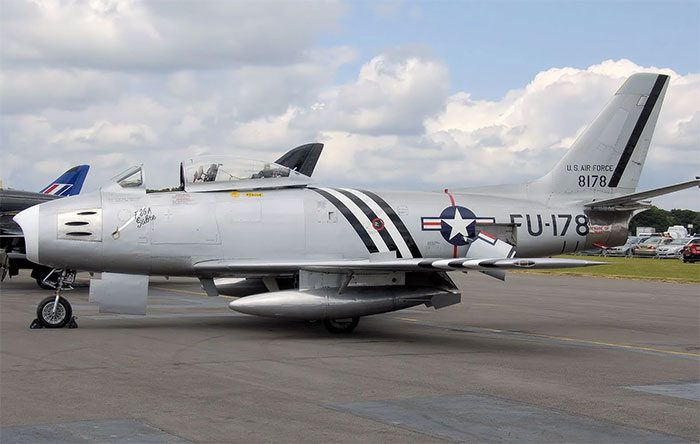
An F-86A Sabre preserved at Kemble Air Day 2008, UK. (Photo: Wikipedia).
In 1958, the Portuguese Air Force (FAP) received 50 F-86F aircraft from the U.S. Air Force’s surplus inventory. Some previously owned F-86F aircraft from the Norwegian Air Force were also purchased for backup during 1968-69. The FAP deployed some of its F-86F Sabres to Portuguese Guinea (now Guinea-Bissau, a small country in West Africa) in 1961, stationed at Bissalanca Air Base, Bissau. These aircraft were used in the Guinea-Bissau War of Independence, conducting ground attack operations and close air support against rebel forces. In August 1962, an F-86F with the tail number 5314 skidded off the runway while making an emergency landing with bombs still attached to the hardpoints under its wings and was destroyed by fire. Another F-86F was shot down by enemy ground fire on May 31, 1963, but the pilot ejected safely and was rescued. Several other aircraft were damaged in combat but were repaired.
In 1964, 16 F-86F aircraft based in Bissalanca returned to mainland Portugal due to pressure from the United States. They conducted 577 combat missions, including 430 ground attack and close support missions.
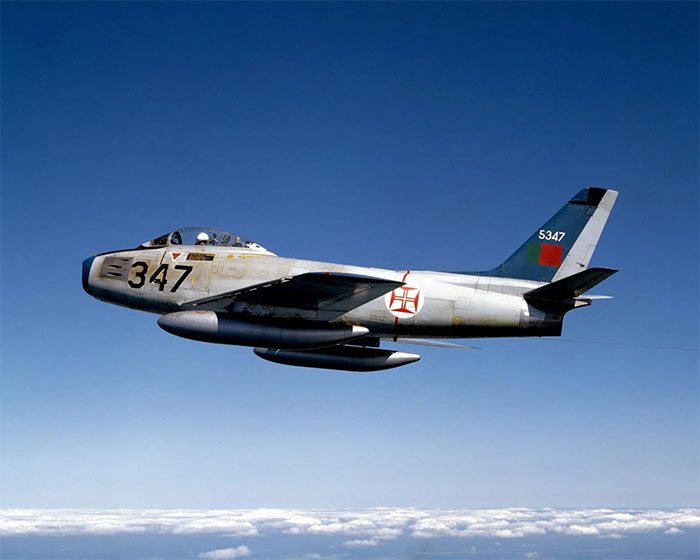
An F-86F of the Portuguese Air Force. Even as the sixth generation fighter was preparing to emerge, these F-86s still performed well. (Photo: imodeler).
Third Generation (1961): The Refined Jet Engine
The F-4 Phantom represented a significant advancement in U.S. military aviation from 1961 to 1996. It was equipped with the J-79 jet engine, which was much more powerful than radial piston engines, allowing the F-4 to fly faster and carry more bombs than World War II bombers. The F-4 was a versatile and agile aircraft that could be used for various missions, including air superiority, strike missions, close air support, reconnaissance, and suppression of enemy air defenses. It is classified as a third-generation fighter.

F-4F aircraft of the German Air Force flying on January 21, 1998. (Photo: Wikipedia).
The F-4 Phantom was introduced just 16 years after World War II ended, and by then, the history of fighter aircraft had progressed to its third generation. It could achieve a maximum speed of 1,711 mph (2,753 km/h), four times faster than the famous P-51D Mustang, and it could fly to an altitude of 18,200 meters, more than double that. Although it weighed less than half of the heavy bomber B-29 Superfortress, it could carry over 50% more weapons, with a total payload of 8,164 kg, including bombs, missiles, and sensor bays. All of this was managed by a crew of just two, fewer than the nine crew members needed for the B-29 bomber.
The RF-4E Phantom II of the Hellenic Air Force with a special color scheme, landing at RIAT 2008, UK. (Photo: Wikipedia).
1964: The Variable Wing Fighter
During the Cold War, one of the most fascinating advancements in aviation was the “variable-sweep wing” or wings with changing shapes. When the wings are swept forward, meaning they have a smaller sweep angle, this configuration improves the aircraft’s stability and control at lower speeds. This is particularly useful during takeoff, landing, and maneuvers, which require slower speeds. Conversely, when the wings are swept backward (with a larger sweep angle), the aircraft is better suited for high-speed flight. This is because the rear-swept wings help reduce drag, enabling the aircraft to fly faster. This configuration is typically used during high-speed pursuits or when the aircraft is cruising. The variable wing design allowed engineers to create an aircraft capable of performing both functions, achieved by mounting the wings on hinges so they can pivot forward or backward in flight.

Four different positions of the wing of the F-111 Aardvark fighter. (Photo: Tinhte).
The first American aircraft with a “variable-sweep wing” design was the F-111 Aardvark. This aircraft was predominantly used for low-altitude bombing missions. The second aircraft with this design was the famous F-14 Tomcat. It would take off and land with its wings swept forward, but when needed to intercept enemy aircraft, it would sweep its wings back. Over time, the variable-sweep wing design became less popular due to its heavy weight and mechanical complexity. Any moving part in a machine always carries a higher risk of failure compared to fixed components. Eventually, the variable-sweep wing was replaced by computer-assisted control systems.

An F-14D Tomcat on a mission in the Persian Gulf in 2005. Its shape shares many similarities with the F-111 Aardvark except for the vertical stabilizers and rear control surfaces. (Photo: Wikipedia).
1971: Vertical Takeoff and Landing
In 1971, the United States Marine Corps received the world’s first fighter jet capable of vertical takeoff and landing. The AV-8A Harrier, produced by the British company Hawker Siddeley, was equipped with a Rolls-Royce Pegasus engine that could direct thrust in any direction—horizontal, vertical, or any angle in between. This unique feature allowed the aircraft to operate without the need for a runway, making it suitable for deployment from U.S. Navy vessels as well as land bases, and highly flexible in air combat scenarios.
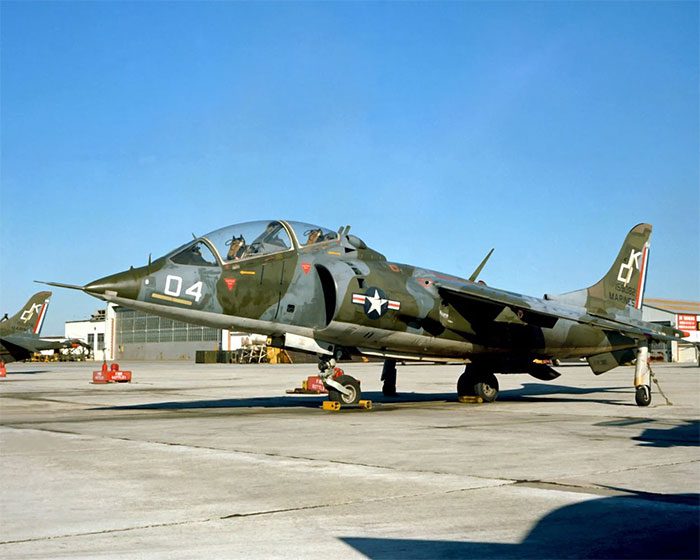
A TAV-8A Harrier fighter jet from the United States Marine Corps. (Photo: Wikipedia).
The AV-8A Harrier was later replaced by the more advanced AV-8B Harrier II. The Marine Corps was so interested in the concept of a fighter jet capable of vertical or short takeoff that they requested a special version of the F-35 Lightning II, known as the F-35B, featuring similar capabilities.
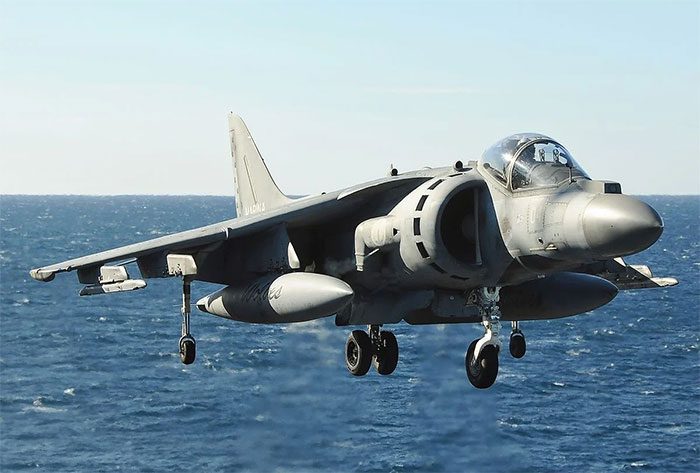
An AV-8B Harrier II of the Italian Air Force in hover. (Photo: Wikipedia).
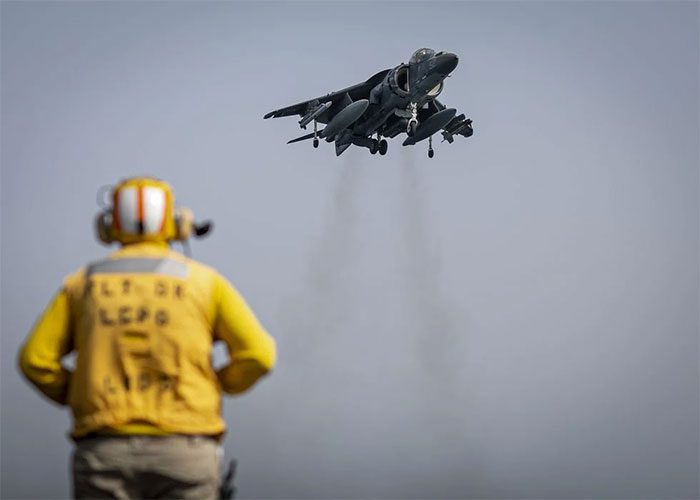
An AV-8B Harrier II of the United States Marine Corps takes off vertically from the USS Bataan in 2023. (Photo: Pop Mech).
Fourth Generation (1978): A Generation That Won’t Fade Away
American fighter jets also suffered significant losses during the Cold War. The wartime experiences highlighted that third-generation jets were large, sluggish, and ineffective in dogfights during the vision-based engagements of the 1970s. This led to the development of fighters like the F-16 Fighting Falcon, which debuted in 1978. The F-16 combined a high thrust-to-weight ratio with exceptional maneuverability, creating an air combat warrior that had few rivals.
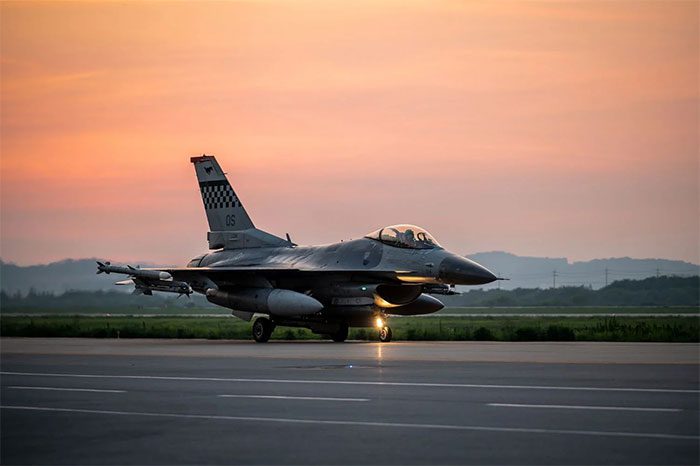
An F-16 Fighting Falcon at Osan Air Base, South Korea. (Photo: Osan).
Fourth-generation aircraft remained useful for much longer than their predecessors due to several upgrades. These improvements included precision-guided munitions controlled by targeting systems, upgraded radar, and new air-to-air missiles such as the AIM-9L Sidewinder and AIM-120 AMRAAM. Today, 45 years after the first F-16A was commissioned, this aircraft model is still being produced. In fact, new F-16Vs are currently being manufactured in South Carolina.
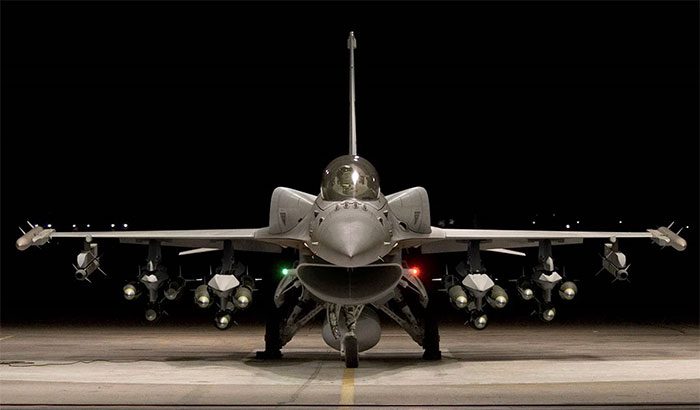
The F-16V, the latest variant of the F-16, in a hangar. (Photo: Lockheed Martin).
1983: Stealth Fighters
Four decades ago, the idea of an aircraft capable of evading radar detection was just a dream. The significant loss of aircraft in the past raised the question: Could a plane be built that radar could not detect? Theoretically, a plane designed with a special exterior to reduce radar wave reflection and painted with radar-absorbing paint could sneak through enemy defenses undetected. If equipped with laser-guided bombs, this aircraft could not only strike targets accurately but also have a high chance of survival.
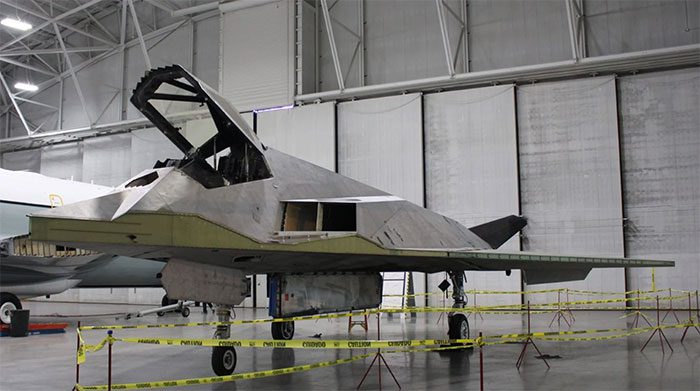
An F-117A on display. (Photo: Sac Museum).
In 1983, while dreams of a stealth “fighter” were being imagined, one was quietly brought into operation. The F-117A Nighthawk, developed and manufactured in complete secrecy, was being tested at the Tonopah Test Range in Nevada. Ultimately, 59 of these aircraft were built. Their combat debut was in the 1989 Panama invasion, followed by participation in Operation Desert Storm in 1991, the U.N. intervention in Yugoslavia in 1999, operations in Afghanistan in 2001, and the Iraq War in 2003.

The F-117A is the first aircraft designed to utilize stealth capabilities in combat. (Photo: Pop Mech).
Fifth Generation (2005): Raptor Fighters and Friends
By the late 1980s, a program called the Advanced Tactical Fighter (ATF) was initiated to create a new type of fighter to replace the F-15 Eagle. This new aircraft would be the first designed for air-to-air combat with stealth capabilities from the outset. It would feature a powerful Pratt & Whitney F119 engine, allowing the aircraft to fly faster than the speed of sound. It would also incorporate a radar system using active electronically scanned array technology, which could detect enemy targets from great distances. Development slowed after the Cold War ended, but it was eventually put into service in 2005 as the F-22 Raptor.
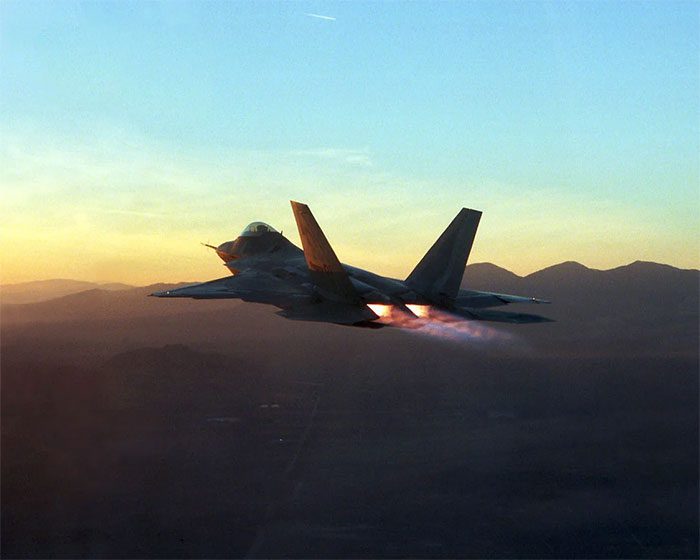
F-22 Raptor undergoing testing with a Pratt & Whitney F119 engine operating at full power in afterburner mode, Edwards Air Force Base, California. (Photo: Wikipedia).
The F-22 was the first fifth-generation fighter, setting standards for this generation. Following the F-22, other aircraft such as China’s Chengdu J-20 “Mighty Dragon,” the Sukhoi Su-57, and the F-35 Lightning II were developed. These aircraft share similar features with the F-22. A total of only 195 F-22s were produced.
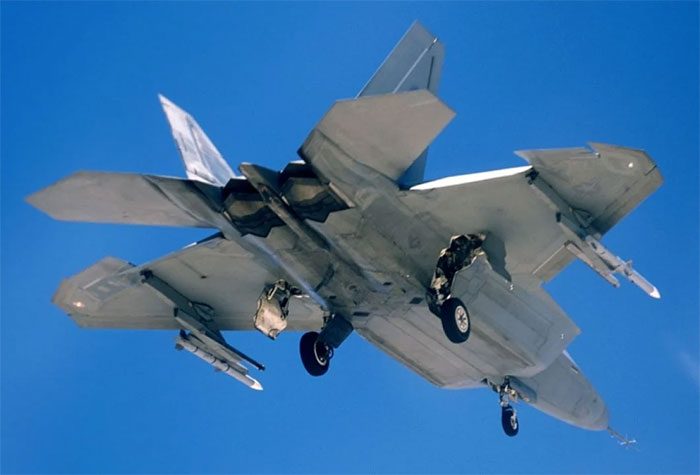
F-22 with external weapon mounts. (Photo: Wikipedia).
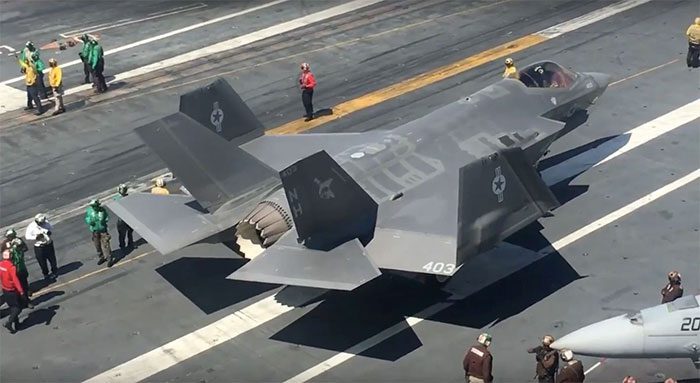
F-35C fighter jet on the deck of USS Lincoln. (Photo: Breakingdefense).
Sixth Generation (2020)
The F-22 and F-35 fighters were developed during a relatively peaceful time, which is why each took more than ten years to transition from concept to finished product. With Russia and China both developing their own fifth-generation fighters, the U.S. Air Force and Navy began researching the first sixth-generation fighters. Both branches are designing their own aircraft, referring to their designs as Next Generation Air Dominance (NGAD).
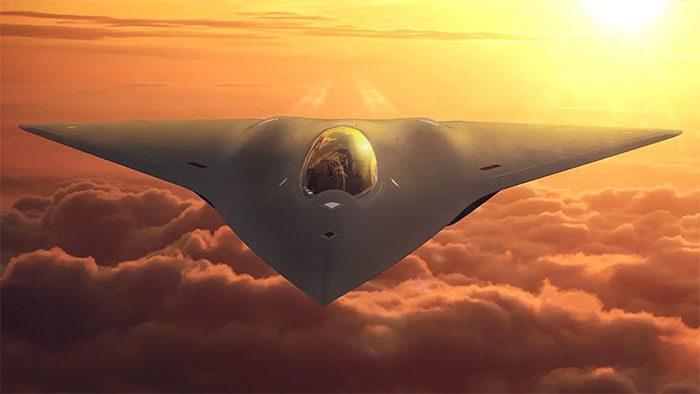
A concept of Lockheed Martin’s sixth-generation NGAD fighter. (Photo: Sanboxx).
In September 2020, the U.S. Air Force announced that it had built, tested, and flown a prototype of a new fighter, also named NGAD. Even three years later, its appearance and capabilities remain unknown. While it is too early to say for sure, it is likely that the sixth-generation fighter will feature reconfigurable radar for various purposes, pilotless combat drones that can operate as robotic support aircraft, and engines that can adapt to prioritize speed or fuel efficiency.
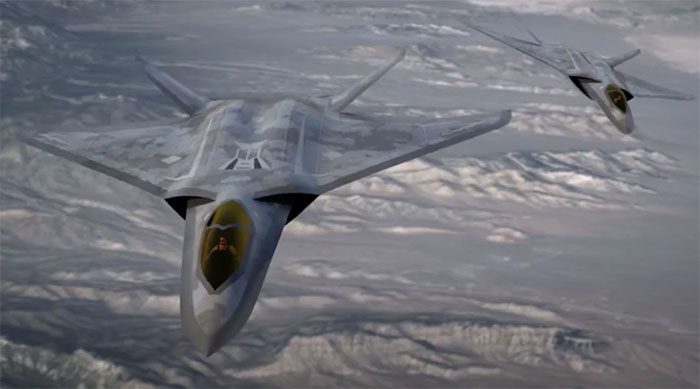
Another concept from Lockheed Martin for a sixth-generation fighter. (Photo: Pop Mech).









































